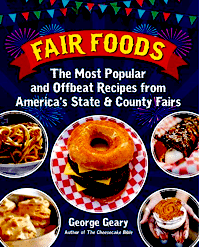Participating in a cooking contest at the county fair can be both exciting and nerve-wracking. It’s an opportunity to showcase your culinary skills, creativity, and passion for food. However, standing out among a sea of talented contestants requires more than just cooking a delicious dish. This guide provides actionable tips and strategies to help you prepare, execute, and present your best work for a shot at victory.
How to win cooking contest at county fair?
1. Understand the Rules and Guidelines
Before you begin brainstorming recipes, thoroughly read the contest rules and guidelines. These are often provided in advance and outline essential details such as:
- Eligible categories (e.g., baked goods, savory dishes, desserts).
- Specific ingredient requirements or restrictions.
- Presentation guidelines, such as portion sizes or serving style.
- Submission deadlines and timing.
Adhering to the rules ensures you avoid unnecessary deductions or disqualification. For instance, if the contest mandates the use of local produce, incorporating out-of-season or imported ingredients could harm your chances. Additionally, understanding the scoring criteria—whether it’s focused on taste, creativity, or presentation—can help you tailor your approach.
2. Choose a Winning Recipe
Selecting the right recipe is crucial to your success. Here are some considerations to keep in mind:
- Play to Your Strengths: Choose a dish you’re confident in and have mastered through practice.
- Keep the Theme in Mind: If the contest has a specific theme, such as “farm-to-table” or “family traditions,” align your recipe accordingly.
- Balance Creativity and Familiarity: Judges often appreciate innovative takes on classic recipes rather than overly experimental dishes.
- Avoid Common Pitfalls: Stay away from overly complex recipes that may increase the risk of errors under pressure.
Example: Instead of presenting a basic apple pie, try adding a unique twist such as caramelized pears or a spiced crust.
3. Focus on High-Quality Ingredients
High-quality ingredients can significantly elevate the taste and appeal of your dish. When sourcing your ingredients:
- Opt for fresh and locally grown produce whenever possible.
- Use seasonal items to highlight natural flavors and align with a farm-to-table approach.
- Avoid processed or artificial components that might detract from the dish’s authenticity.
For example, if you’re making a berry tart, handpicking ripe, locally sourced berries can make a noticeable difference in flavor.
4. Perfect Your Presentation
The visual appeal of your dish is almost as important as its taste. Here are some tips to make your presentation stand out:
- Balance Colors and Textures: Incorporate a variety of vibrant colors and textures to make your dish visually appealing.
- Neatness Matters: Ensure that your plating is clean, with no smudges or spills.
- Choose the Right Plate: The dishware you use should complement the food without overshadowing it.
- Creative Garnishing: Use edible garnishes like fresh herbs, zest, or finely chopped nuts to enhance the look.
Presentation doesn’t need to be overly elaborate—a simple, well-thought-out design can leave a lasting impression.
5. Practice, Practice, Practice
Even the best recipe needs practice to achieve perfection. Here’s how you can prepare effectively:
- Simulate the Contest Environment: Practice cooking under time constraints and in conditions similar to the competition.
- Test Your Recipe: Cook your chosen dish multiple times to fine-tune the flavor, texture, and presentation.
- Gather Feedback: Share your dish with friends or family and ask for honest critiques.
- Refine Your Timing: Ensure you can complete all steps—from cooking to plating—within the allotted time.
By practicing consistently, you’ll build confidence and be better prepared to handle any surprises.
6. Know Your Judges
Understanding the preferences and expectations of the judging panel can give you a competitive edge. While you may not always have direct information about the judges, here are some general tips:
- Research previous contests to identify trends or recurring themes in winning dishes.
- Focus on universal appeal by balancing bold flavors with familiar tastes.
- Ensure your dish aligns with the contest’s scoring criteria, whether it’s flavor, originality, or adherence to theme.
7. Exude Confidence During the Contest
Your demeanor during the contest can influence how judges perceive your dish. To maintain confidence:
- Stay calm and focused, even if unexpected issues arise.
- Present your dish with enthusiasm, highlighting what makes it special.
- Avoid overexplaining or apologizing for perceived flaws.
A confident and composed presentation can leave a positive impression on the judges.
8. Learn from Past Winners
Studying past winners can provide valuable insights into what works in a county fair cooking contest. Consider:
- Reviewing their recipes to understand what set them apart.
- Observing presentation styles and ingredient choices.
- Identifying any common themes or recurring trends in their dishes.
For example, if desserts with a nostalgic twist tend to win, you might explore recipes that evoke childhood memories while adding your own creative spin.
9. Checklist for Contest Day
A checklist can help you stay organized and ensure you’re fully prepared for the big day:
- All required ingredients, prepped and measured.
- Necessary cookware, utensils, and serving dishes.
- Backup supplies, such as extra ingredients or tools.
- A plan for transporting your dish to the contest venue safely.
Having everything ready will help reduce stress and allow you to focus on cooking your best.
10. Embrace the Experience
While winning is the ultimate goal, participating in a cooking contest is also about enjoying the process. Use the opportunity to:
- Meet fellow contestants and exchange ideas.
- Gain feedback from the judges to improve your skills.
- Celebrate your passion for cooking and the joy of sharing it with others.
Remember, every contest is a learning experience that prepares you for future competitions.
Conclusion
Winning a cooking contest at the county fair requires a combination of preparation, creativity, and attention to detail. By understanding the rules, selecting a standout recipe, and focusing on quality and presentation, you can increase your chances of impressing the judges. Even if you don’t win on your first attempt, the experience will provide valuable lessons to refine your skills and approach. So, roll up your sleeves, put on your apron, and give it your best shot—the next blue ribbon could be yours!








Leave A Comment